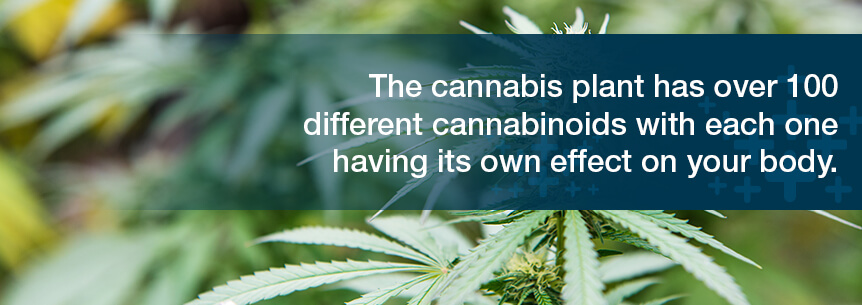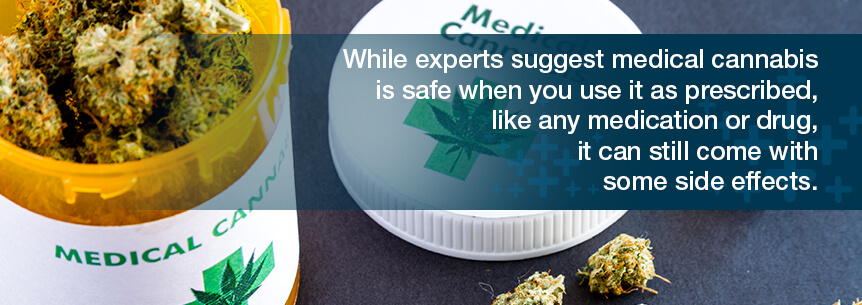Marijuana comes from the cannabis sativa plant’s dried buds and leaves. You can smoke it, inhale it or ingest it in tea, beverages and food. You may also find it in oil or pill form. The term “medical marijuana” refers to the plant’s whole, unprocessed use or using extracts of the plant to treat specific health conditions and their symptoms. Depending on why you need this medicinal herb, your treatment can be short-term or long-term.
While many see weed as a recreational drug, doctors and individuals have used it medicinally for many years. Marijuana is illegal in most U.S. states for recreational use, but many states have legalized it for medicinal use. Still, the Food and Drug Administration (FDA) has not yet approved it for medicine — not yet anyway.
However, the FDA has approved two products containing synthetic cannabinoid compounds. These are:
Since the cannabis plant contains these cannabinoids with the ability to help treat a wide variety of conditions and symptoms, people feel officials should lift the medical marijuana regulations against it. However, with research supporting the medicinal benefits of cannabis for a variety of health conditions, many states have already made pot legal for medical use for certain qualifying conditions — and this list is growing.

The cannabis plant has over 100 different cannabinoids with each one having its own effect on your body. Two of the primary cannabinoids in the plant are cannabidiol (CBD) and Delta-9-tetrahydrocannabinol (THC). THC is what gives you the “high” feeling when you smoke or ingest cannabis, while CBD provides therapeutic value without the psychoactive effects.
When you inhale or ingest marijuana, these cannabinoids bind to certain nerve cells and brain receptors and ease discomfort by slowing pain impulses. You have cannabinoid receptors in your:
Research is still ongoing as far as how it affects your health, but researchers do know cannabinoid receptors have a lot to do with many of your body processes, including:
Cannabis treats a variety of different health conditions which we’ll discuss in detail later in this guide in Chapter 5. But, here is a partial list of some common conditions the herb can treat:
When you use medical marijuana as intended and directed, you can expect to experience symptom relief, to feel better all-around and to see some improvement in your quality of life.
According to the California Medical Association (CMA), medical marijuana provides the greatest efficacy for easing chronic neuropathic pain. Neuropathic pain is from disease or nerve injury. Additionally, since cannabis makes you hungry, it also can help with appetite loss, which is common with diseases like AIDS. It can help ease the side effects of cancer treatments, such as nausea, as well.
Although the symptoms weed can help treat will vary depending on your health condition, the most common symptoms the herb treats include the following:
Other research suggests medical pot can slow tumor growth and kill cancer cells. Studies on animals show that specific cannabinoids slowed the growth of certain types of cancer and kept them from spreading.
A common question many people ask regarding medical cannabis is why use it when there are a wide-range of other legal medicines readily available. Some responses were patients aren’t using weed to simply feel good, but rather using the herb for medical purposes for specific diseases and symptoms best treated with cannabis — just like cough syrup helps with coughing.
For instance, research already shows cannabis increases the appetite and decreases nausea, which is essential for those unable to maintain proper nutrition because they can’t keep their food down. The herb also lowers intraocular eye pressure in glaucoma patients, relieves peripheral neuropathy pain better than traditional painkillers. It also isn’t addictive and doesn’t cause unpleasant side effects like narcotic pain medications.

While experts suggest medical cannabis is safe when you use it as prescribed, like any medication or drug, it can still come with some side effects. Most, however, are either mild or rare.
Potential side effects of cannabis listed by the National Cancer Institute (NCI) include:
Although the FDA hasn’t approved medical cannabis yet on the federal level, more and more doctors are taking the stand and swearing by its health benefits and effectiveness.
Before starting cannabis treatment, you’ll want to sit down with your doctor and discuss any possible side effects. To learn more detailed information on potential side effects of weed, refer to the FAQ section in chapter nine at the end of this guide.
Since you have many options when it comes to your cannabis treatment, chapter two educates you on the different types of medical marijuana.